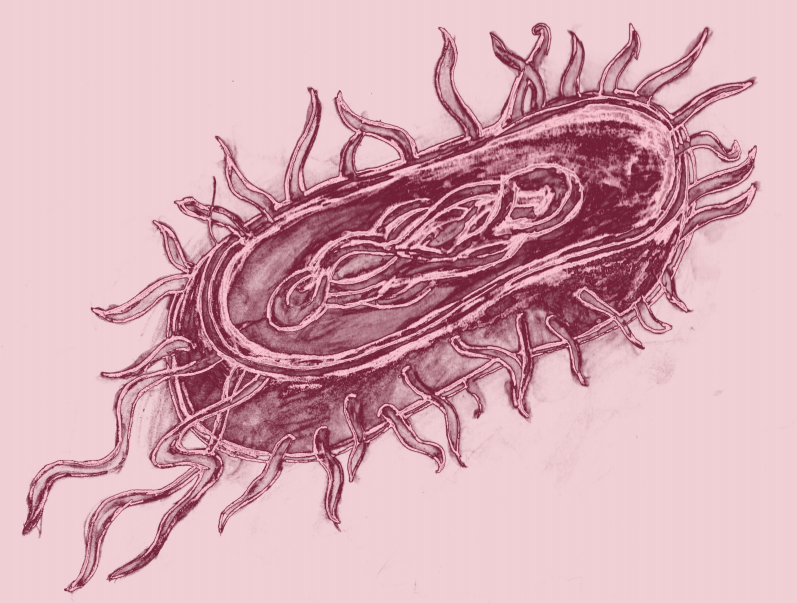
While penicillin works very well, there have been a number of problems in recent years – primarily the evolution of multi-resistant bacteria. These microbes are the juggernauts of the microbial world and are relatively unfazed by courses of antibiotics, withstanding wave after wave of penicillin, amoxicillin and the like. The most infamous of these is methicillin-resistant Staphylococcus aureus or MRSA which puts hospital patients with weakened immune system at particular risk. The evolution of MRSA and other resistant bacteria is partly due to misuse and overuse of antibiotics to treat things like the common cold or non-bacterial infections, and also unfinished antibiotic courses. More and more bacteria are becoming resistant to penicillin and its relatives which is quite a worrisome state of affairs. However, a research published recently in Nature has heralded a new age of antimicrobial agent discovery with a novel antibiotic: teixobactin.
Importance
Dr. Kim Lewis of Northeastern University in Boston, Massachusetts, and Dr. Slava Epstein of the same university ventured into a grassy area in Maine and, using a new technology called the IChip, discovered a bacterium now known as Eleftheria terrae which produced the teixobactin antibiotic. The IChip machine is a small device which basically turns the earth into a petri dish, allowing microbes to be directly cultivated form the soil. As attempts at synthetic antibiotics have failed before and the last major antibiotic discovery was over 20 years ago, microbiologists across the globe have delighted in the news.
Professor Tim Foster of College’s microbiology department last week told Trinity News that “the discovery highlights a new method for getting soil bacteria to grow in the lab, upping the [growth] number from 10% to 50% using an enrichment technique.” He said, “The drug is of interest because it has a novel mode of action. It targets a lipid rather than a protein of ribosomal RNA (a building block which makes up ribosomes in cells) so resistance cannot arise by mutation.”
Resistance to teixobactin may not develop, and if resistance does develop it is predicted to take at least 30 years of clinical use before it will be observed.
However, Professor Foster also offered insight which may but the importance of the discovery in a more realistic perspective; “(the novel mode of action) does not preclude antibiotic resistance acquired by transfer from other bacteria. This is the most common force of resistance.”
In contrast, Brian Conlon, a senior research scientist who worked in Kim Lewis’ lab and performed the antibiotic killing experiments in the recent paper, told Trinity News that he was confident of the potential of teixobactin. “No resistance to this antibiotic could be detected using a variety of experimental approaches,” he said. “Resistance to teixobactin may not develop, and if resistance does develop it is predicted to take at least 30 years of clinical use before it will be observed.”
Human use
Elimination of resistant bacteria is an extremely important goal as up to 5% of patients in U.S health care facilities are infected with MRSA and in Ireland it is estimated that up to 200,000 members of the general public are infected with MRSA according to a recent report by drug company Pfizer. Furthermore, the current treatments of MRSA and other resistant bacteria involve long courses of heavy duty antibiotics and invasive treatments such as syringe drainage. If teixobactin makes it through clinical trials, according to Conlon, the novel drug will be able to “treat highly antibiotic resistant strains of important pathogens such as M. tuberculosis and S. aureus”.
There are of course factors involved in whether or not teixobactin will make it to the mass distribution stage other than its suitability for human use. Foster explained that the public and broader scientific community should be aware that there are many reports each year of novel antibiotics. “To reach the clinic is a long journey and many/most candidates fall by the wayside,” he said. “One issue is that pharmaceutical companies have stopped developing antibiotics for a variety of reasons – low profit, restricted usage, the high cost of clinical trials and the expense of production.” At the moment, experts in the field of microbiology have estimated that clinical trials will begin in two years and, if it is approved, may be available for prescription in less than six years time. The drug will most likely have to be injected rather than taken in tablet form.
Most synthetic chemists and biologists will tell you that getting a drug on the market is a feat accomplished by relatively very few scientists. It is not uncommon for someone in drug discovery to not have a single compound which makes it out of clinical trials throughout a 40 to 50 year career. However, with novel technologies, greater communication links being established between laboratories around the world and much higher pressure being placed on health services to offer defense against ever-evolving pathogens, a new age of reliable drug discovery and research may just be around the corner.
Illustration: Emer O’Cearbhaill






